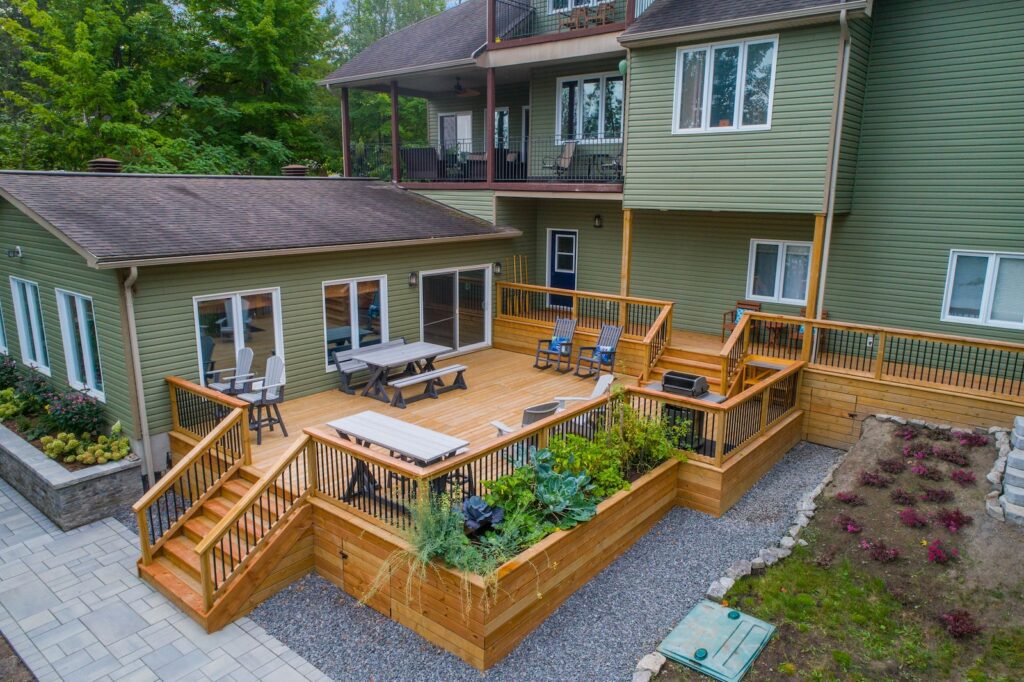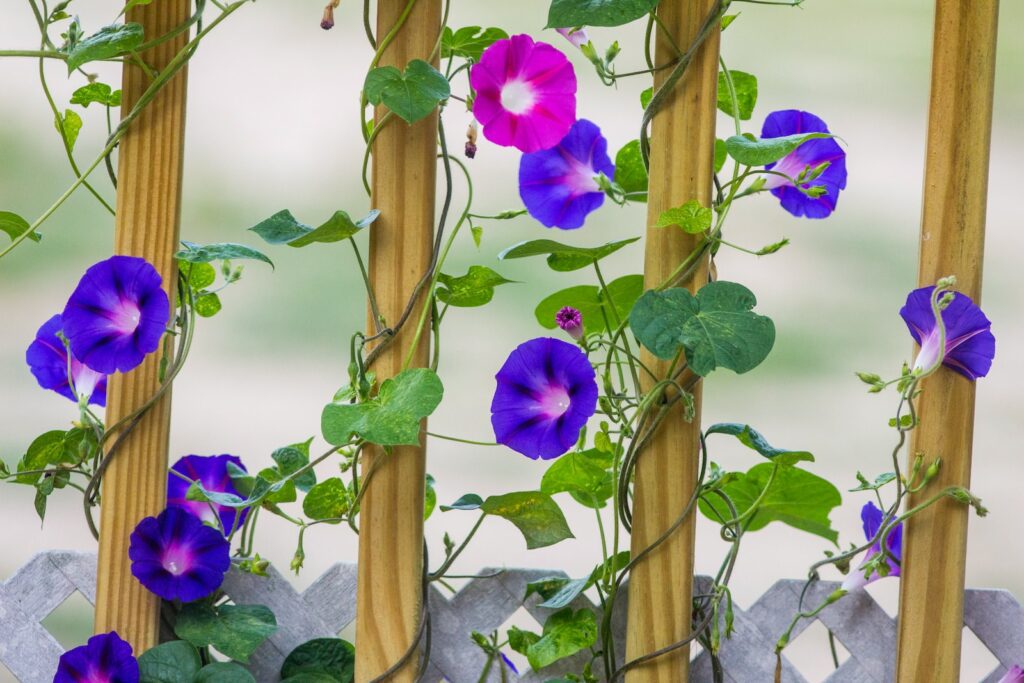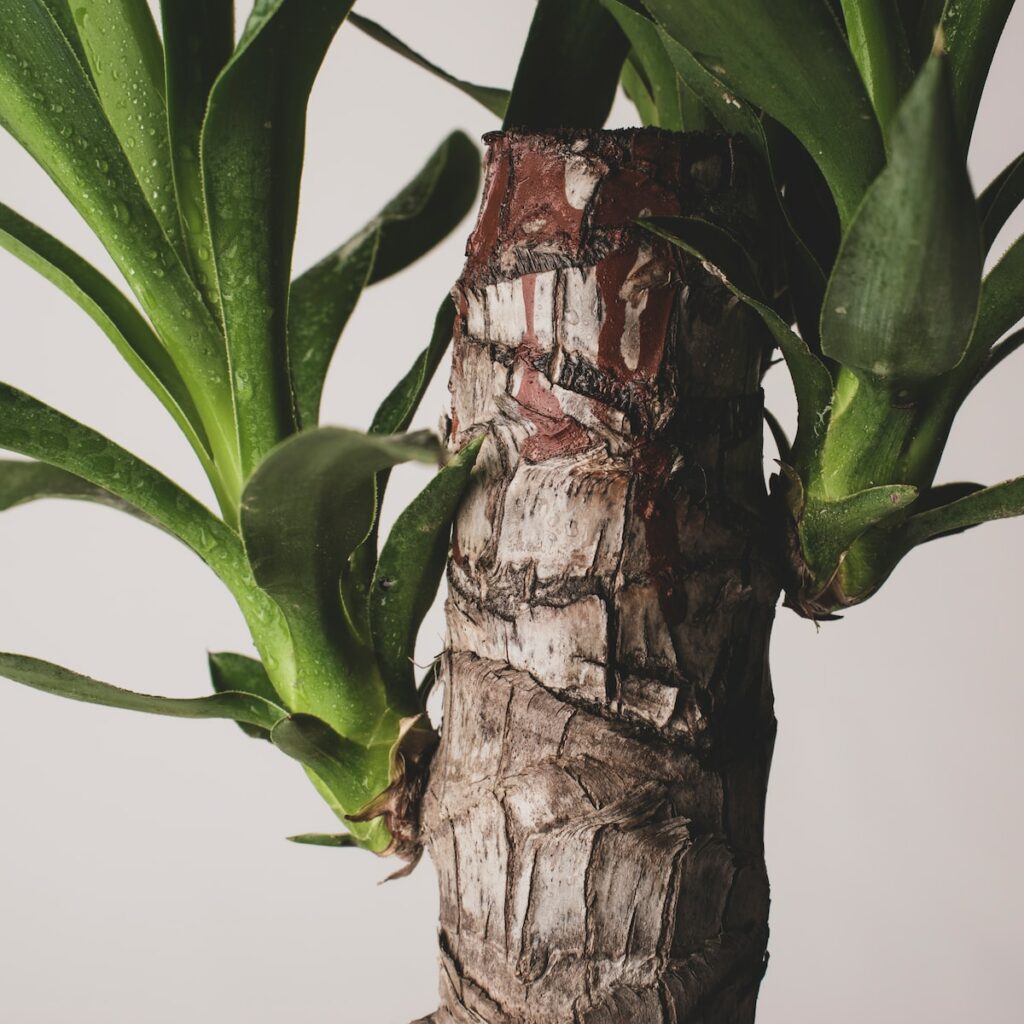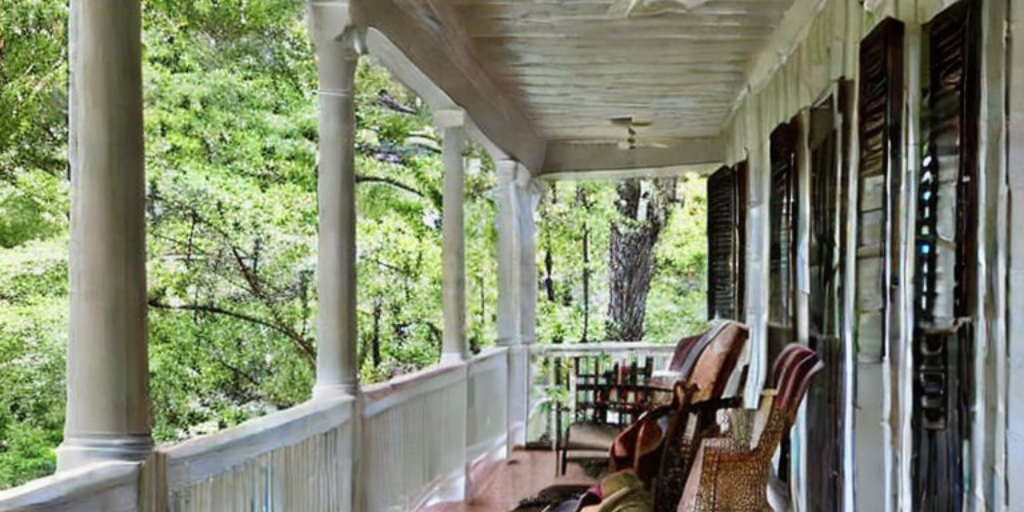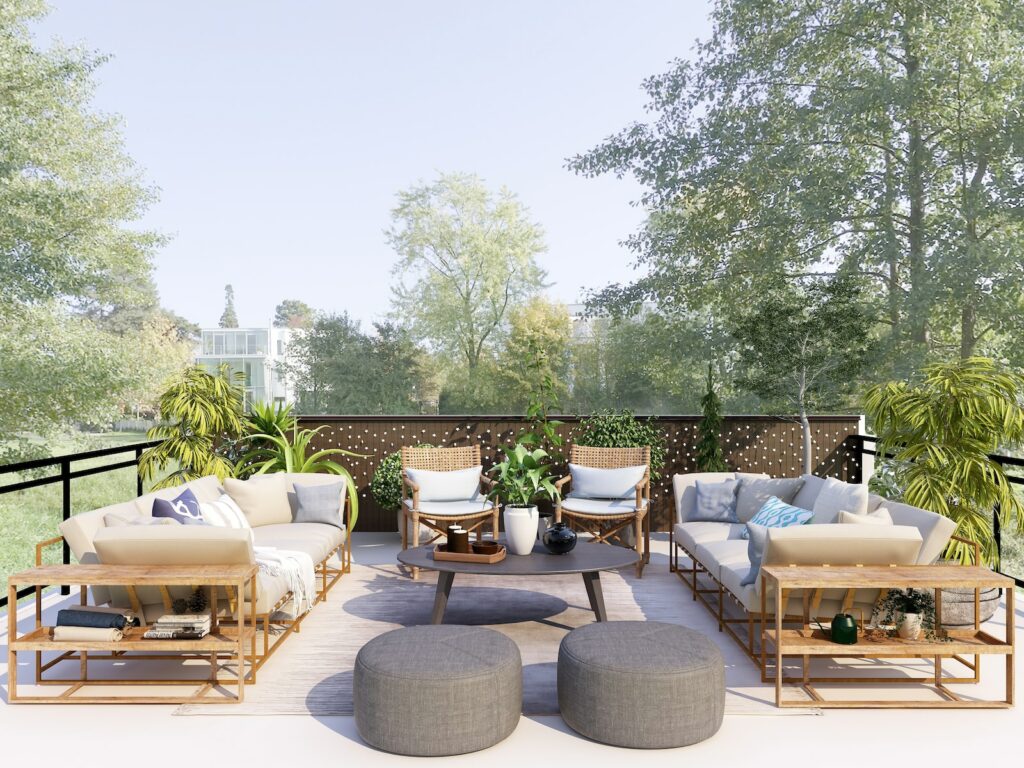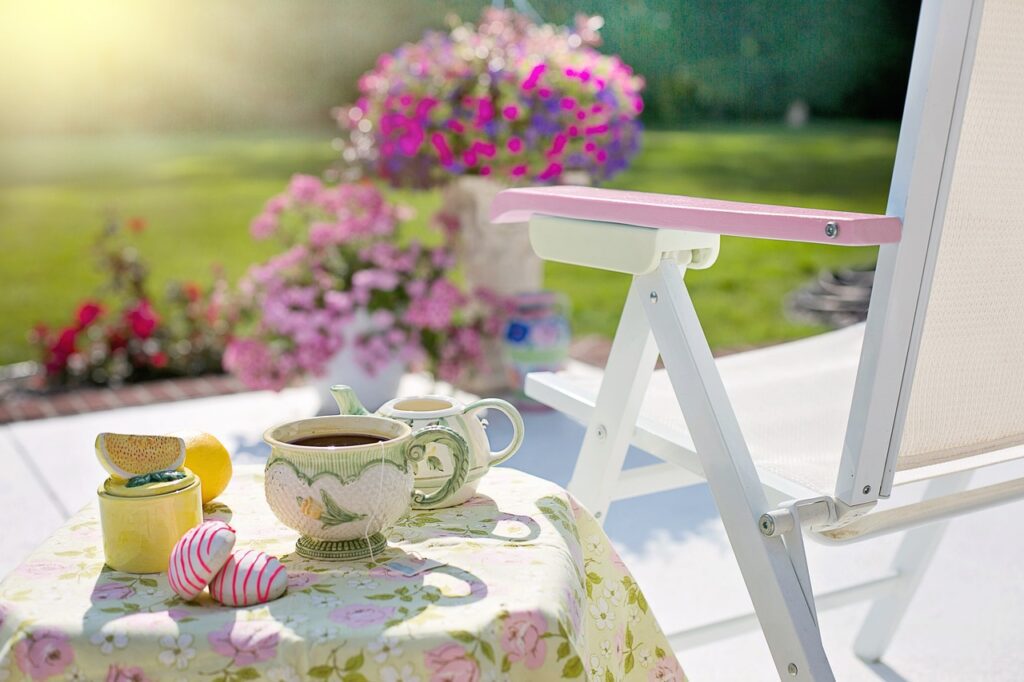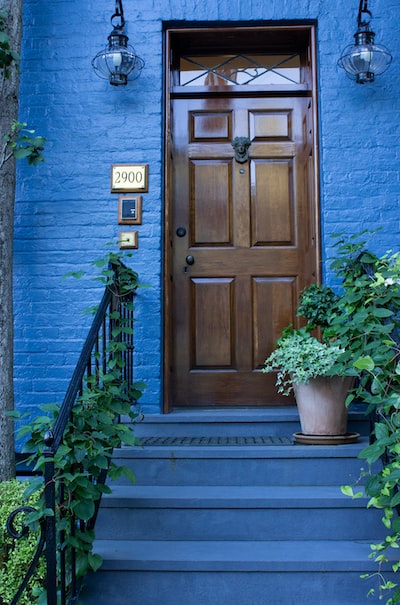If you’re looking to spruce up your outdoor living space, learning how to decorate deck with plants is an excellent way to bring life and color to the area. Not only do plants add visual interest, but they can also provide shade, privacy, and a natural ambiance to your outdoor oasis.
With so many options available, it can be overwhelming to decide how to decorate your deck with plants. But don’t worry, we’ve got you covered! In this guide, we’ll show you how to transform your deck into a lush and inviting space with the perfect plant selection and placement.
How to decorate your deck with plants?
Contents
- 1 How to decorate your deck with plants?
- 2 What are the best plants for decorating a deck?
- 3 How do I choose the right plants for my deck?
- 4 What are some low-maintenance plants for a deck?
- 5 How can I add privacy to my deck with plants?
- 6 What are the best hanging plants for a deck?
- 7 How can I make my deck look more colorful with plants?
- 8 What are some shade-loving plants for a deck?
- 9 How can I incorporate herbs into my deck decor?
- 10 What are some creative DIY planters for a deck?
- 11 How can I create a tropical look on my deck with plants?
- 12 What are some flowering plants that attract pollinators to a deck?
- 13 What are the best plants for a sunny deck?
- 14 What are some plants that can survive in a windy location on a deck?
- 15 How can I create a minimalist deck decor with plants?
- 16 What are some evergreen plants for year-round deck decor?
- 17 How can I incorporate vines into my deck decor?
- 18 What are some plants that can repel mosquitoes on a deck?
- 19 How can I use succulents to decorate my deck?
- 20 What are some plants that can handle the heat on a deck?
- 21 How can I keep my plants healthy and thriving on my deck?
- 22 Final thoughts on how to decorate deck with plants
Decorating your deck with plants is a great way to add natural beauty and a touch of personal style to your outdoor living space. Here are some tips to help you get started:
Choose the right plants: Consider the amount of sunlight and shade your deck receives throughout the day, as well as the climate in your area. Select plants that will thrive in those conditions and that suit your personal style.
Mix and match plant types: Combine different types of plants with varying heights, colors, and textures to create visual interest and dimension.
Use planters: Use a variety of planters to add depth and create different levels of plant height on your deck. You can use pots of varying sizes, hanging baskets, or even wall-mounted planters.
Add privacy with plants: If you’re looking for more privacy on your deck, consider using tall plants like bamboo or grasses to create a natural screen.
Incorporate fragrant plants: Add fragrance to your deck by incorporating fragrant plants like lavender or jasmine. These will not only smell wonderful but can also help repel insects.
Consider maintenance: Be sure to choose plants that are easy to maintain and that fit within your lifestyle. If you’re short on time, select plants that require less frequent watering or pruning.
With these tips in mind, you’ll be able to decorate your deck with plants that enhance its beauty and create a tranquil outdoor retreat that you can enjoy all season long.
What are the best plants for decorating a deck?
When it comes to selecting plants for decorating your deck, there are many options to choose from. Here are some of the best plants for deck decor:
Petunias: These colorful annuals are perfect for adding pops of color to your deck decor. They thrive in full sun and are easy to care for.
Geraniums: Another popular annual, geraniums come in a variety of colors and are great for adding height to your deck decor. They prefer full sun but can also tolerate some shade.
Succulents: These low-maintenance plants come in a wide variety of shapes and sizes and are perfect for adding a modern touch to your deck decor. They prefer bright, indirect light.
Ferns: Ferns are great for adding texture and a lush, tropical feel to your deck decor. They prefer partial shade and moist soil.
Hostas: These shade-loving perennials come in a variety of sizes and shapes and are perfect for filling in empty spaces on your deck. They require regular watering and can tolerate a range of light conditions.
Herbs: Herbs like basil, parsley, and thyme not only add visual interest to your deck decor but are also practical for cooking. They prefer full sun and well-draining soil.
Ornamental grasses: These hardy perennials come in a range of sizes and shapes and are perfect for adding height and texture to your deck decor. They prefer full sun but can also tolerate some shade.
By incorporating these plants into your deck decor, you can create a beautiful and inviting outdoor space that you’ll love to spend time in.
How do I choose the right plants for my deck?
Choosing the right plants for your deck is an important part of creating a beautiful and functional outdoor space. When selecting plants, there are several factors to consider, including the amount of sunlight your deck receives, the size and shape of your planters, and your personal preferences for color and texture.
First, consider the amount of sunlight your deck receives. If your deck is in full sun for most of the day, you’ll want to choose plants that can tolerate high levels of direct sunlight, such as succulents, petunias, and ornamental grasses. If your deck is in partial shade, you can choose plants that prefer lower levels of sunlight, such as ferns, hostas, and impatiens.
Next, consider the size and shape of your planters. If you have large, deep planters, you can choose plants that have deep roots and require more soil, such as shrubs or small trees. If your planters are shallow, you’ll want to choose plants with smaller root systems, such as annuals or perennials.
Additionally, you’ll want to consider the shape and size of your planters when choosing plants, as some plants may not fit well in certain planters. By considering these factors, you can choose plants that will thrive in your deck environment and complement your decor style.
What are some low-maintenance plants for a deck?
Low-maintenance plants are an excellent choice for those who want to enjoy a beautiful deck without the hassle of frequent upkeep. Luckily, there are many low-maintenance plants that are perfect for deck decor. One of the best options is succulents, which come in a variety of colors, shapes, and sizes. Succulents store water in their leaves, allowing them to survive with minimal watering and maintenance.
They also thrive in bright, indirect light, making them perfect for sunny decks. Another low-maintenance plant option is ornamental grasses, which come in a range of sizes and shapes and require little care beyond occasional watering. They also add height and texture to your deck decor, making them a great choice for those who want to add visual interest without a lot of maintenance.
Another great low-maintenance plant option for deck decor is herbs. Herbs like basil, thyme, and rosemary not only add visual interest to your deck, but are also practical for cooking. They prefer full sun and well-draining soil, and require only occasional watering and pruning.
Herbs also come in a variety of colors and textures, making them a versatile choice for deck decor. By choosing low-maintenance plants for your deck, you can create a beautiful outdoor space that requires minimal upkeep, allowing you to spend more time relaxing and enjoying your surroundings.
How can I add privacy to my deck with plants?
Adding privacy to your deck with plants is a great way to create a peaceful and secluded outdoor space. There are several ways to use plants to create privacy on your deck, depending on your preferences and the layout of your space. One option is to use tall, narrow plants, such as bamboo or cypress trees, in planters along the edge of your deck.
These plants can grow tall enough to create a natural screen, blocking the view of your deck from neighbors or passersby. Another option is to use climbing plants, such as ivy or climbing roses, on trellises or pergolas. These plants can grow up and over your deck, creating a natural canopy that provides shade and privacy.
You can also use a combination of plants and other privacy features to create a secluded outdoor space. For example, you can use a combination of tall plants, trellises, and lattice panels to create a natural screen around your deck.
You can also use hanging baskets or planters filled with trailing plants, such as ivy or sweet potato vines, to create a natural curtain that provides privacy without blocking sunlight. By using plants creatively, you can create a private and tranquil outdoor space that is perfect for relaxing, entertaining, or enjoying the beauty of nature.
What are the best hanging plants for a deck?
Hanging plants are a great way to add visual interest to your deck while also conserving space. When choosing the best hanging plants for your deck, it’s important to consider the amount of sunlight your deck receives and the type of planter you’ll be using. One of the best hanging plants for decks is the spider plant, which is known for its long, thin leaves that cascade over the edges of a hanging basket.
Spider plants prefer bright, indirect light and can tolerate low humidity, making them an excellent choice for outdoor environments. Another great option is the Boston fern, which has delicate, feathery fronds that create a lush, tropical look. Boston ferns prefer partial to full shade and need to be watered regularly to keep the soil moist.
Another excellent hanging plant for decks is the petunia, which comes in a wide range of colors and creates a beautiful, cascading effect when planted in a hanging basket. Petunias prefer full sun and require regular watering, but they are relatively low-maintenance and can bloom all summer long.
Other great options for hanging plants on a deck include trailing herbs like thyme or oregano, which can be both beautiful and functional for cooking, and succulents like string of pearls, which can add a unique and interesting texture to your outdoor space. By choosing the best hanging plants for your deck, you can create a beautiful and inviting outdoor space that is perfect for relaxing and enjoying the beauty of nature.
How can I make my deck look more colorful with plants?
Adding colorful plants to your deck is a great way to create a vibrant and inviting outdoor space. One of the easiest ways to add color is by using flowering plants. Some of the best options for colorful flowering plants on a deck include petunias, geraniums, and impatiens. These plants come in a wide range of colors, including bright pinks, yellows, and purples, and can be planted in pots or hanging baskets for added visual interest.
Another way to add color to your deck is by using plants with colorful foliage. Plants like coleus, which has brightly colored leaves in shades of green, pink, and red, can create a bold and eye-catching look on your deck. Other colorful foliage plants include croton, which has variegated leaves in shades of red, orange, and yellow, and cordyline, which has striking burgundy and purple leaves.
Another way to add color to your deck with plants is by using a variety of plant heights and textures. Adding plants of different heights and textures can create a dynamic and interesting look on your deck. For example, you can use tall, spiky plants like yucca or ornamental grasses, paired with lower-growing plants like petunias or marigolds, to create a layered and textured look.
You can also use plants with interesting shapes or patterns, such as the snake plant, which has tall, pointed leaves with yellow edges, or the bird’s nest fern, which has round, crinkled leaves in a bright shade of green. By using a variety of colorful plants with different heights and textures, you can create a deck that is both beautiful and visually interesting.
What are some shade-loving plants for a deck?
If your deck is in a shaded area, it’s important to choose plants that can thrive in lower light conditions. Fortunately, there are many beautiful and low-maintenance plants that can do well in shade. One of the best shade-loving plants for a deck is the hosta, which has large, attractive leaves in shades of green, blue, or yellow.
Hostas are very easy to grow and can tolerate a range of soil types, making them a great choice for a low-maintenance deck garden. Another great option for shade-loving plants is the fern, which comes in a variety of sizes and shapes and can add a lush, tropical feel to your deck. Ferns prefer moist soil and can benefit from regular misting to keep their foliage looking healthy and vibrant.
Another option for shade-loving plants on a deck is the coleus, which has colorful leaves in shades of pink, red, purple, and green. Coleus is very easy to grow from cuttings and can be used in hanging baskets or as a border plant for added color and texture.
Other great options for shade-loving plants on a deck include the begonia, which has bright, colorful flowers in shades of red, pink, and white, and the impatiens, which has attractive flowers in shades of pink, red, orange, and white. By choosing the best shade-loving plants for your deck, you can create a beautiful and inviting outdoor space that is perfect for relaxing and enjoying the beauty of nature.
How can I incorporate herbs into my deck decor?
Incorporating herbs into your deck decor is not only aesthetically pleasing but also functional. By growing your own herbs, you can have fresh ingredients at your fingertips for cooking and seasoning your meals.
One of the easiest ways to incorporate herbs into your deck decor is by using hanging baskets or small pots placed on a shelf or table. Herbs such as basil, thyme, and rosemary are great choices for container gardening and can be used for cooking or even for making fragrant herbal teas.
Another way to incorporate herbs into your deck decor is by using them as part of a vertical garden. A vertical garden is a great way to maximize space on a deck, and herbs like mint, chives, and parsley can be grown in a vertical garden for easy access and a beautiful display.
You can also incorporate herbs into your deck decor by using them as part of your outdoor table settings. For example, you can place small pots of herbs on your outdoor dining table for a fresh and fragrant centerpiece. By incorporating herbs into your deck decor, you can add both beauty and functionality to your outdoor space.
What are some creative DIY planters for a deck?
When it comes to decorating your deck with plants, choosing the right planter can make all the difference. While traditional terracotta pots are always a classic choice, there are many creative DIY planters that can add a unique touch to your deck decor. One idea is to repurpose old tires by painting them and filling them with soil and plants.
This can be a great way to add a pop of color to your deck, and it’s an eco-friendly way to reuse materials that might otherwise end up in a landfill. Another fun DIY planter idea is to use a hanging shoe organizer to create a vertical garden. Simply fill the pockets with soil and plants, and hang the organizer from a sturdy hook or railing.
If you’re looking for a more rustic look for your deck decor, consider using wooden pallets to create DIY planters. You can build a simple planter box using pallets and add a coat of paint or stain for a finished look.
Or, you can use the pallets themselves as a vertical planter by stapling landscape fabric to the back and filling the spaces between the slats with soil and plants. By using creative DIY planters, you can add a personal touch to your deck decor and create a unique and inviting outdoor space.
How can I create a tropical look on my deck with plants?
If you want to create a tropical look on your deck, there are many plants that can help you achieve this style. One of the best plants for a tropical deck is the banana plant, which has large, lush leaves that can create a dramatic effect.
The banana plant prefers warm and humid conditions, so it may be best suited for a deck in a tropical climate or one that gets a lot of sun. Another great plant for a tropical deck is the bird of paradise, which has bright orange and blue flowers that can add a pop of color to your outdoor space. This plant also has large, tropical-looking leaves that can create a lush and inviting atmosphere.
Palm trees are another great option for creating a tropical look on your deck. While some varieties of palm trees can be difficult to grow, there are many smaller and more manageable varieties that can be grown in containers. The ponytail palm, for example, has a unique and interesting appearance and is well-suited for container gardening.
Other great plants for a tropical deck include hibiscus, which has large, showy flowers in shades of pink, red, and orange, and the yucca plant, which has long, spiky leaves that can add texture and interest to your deck decor. By incorporating these tropical plants into your deck decor, you can create a relaxing and inviting outdoor space that feels like a getaway to a tropical paradise.
What are some flowering plants that attract pollinators to a deck?
If you want to attract pollinators to your deck, there are many flowering plants that can help. One of the best options is the butterfly bush, which has long, cone-shaped flowers that are rich in nectar and attract butterflies and other pollinators.
This plant is also easy to grow in containers and comes in a variety of colors, from pink to purple to white. Another great option for attracting pollinators is the bee balm plant, which has bright and showy flowers that are loved by bees and hummingbirds. This plant is also known for its fragrant leaves and can be used in teas and other recipes.
Other great flowering plants that attract pollinators to a deck include the black-eyed Susan, which has golden-yellow flowers that bloom in late summer and attract bees and butterflies, and the coneflower, which has daisy-like flowers in shades of pink, purple, and white that attract bees and butterflies throughout the summer.
By incorporating these flowering plants into your deck decor, you can create a beautiful and inviting outdoor space that is buzzing with activity from pollinators. Not only will this help to support the local ecosystem, but it will also add color and life to your deck decor.
What are the best plants for a sunny deck?
When it comes to decorating a sunny deck, there are plenty of options for plants that thrive in the bright sunlight. One of the best plants for a sunny deck is the petunia, which comes in a variety of colors and can bloom from spring through fall.
These plants are also low maintenance and can be easily grown in containers, making them a great option for deck decor. Another great option for a sunny deck is the geranium, which has bright and showy flowers in shades of red, pink, and white. These plants are also very hardy and can withstand hot and dry conditions.
If you want to add some height to your sunny deck, you might consider adding some climbing plants or vines. The morning glory is a great option for a sunny deck, as it has large, trumpet-shaped flowers in shades of blue, pink, and purple that bloom in the morning sun.
Another option for a climbing plant is the clematis, which has large and showy flowers in a variety of colors and can grow up to 20 feet tall. By incorporating these sun-loving plants into your deck decor, you can create a beautiful and inviting outdoor space that is bursting with color and life.
What are some plants that can survive in a windy location on a deck?
If you’re looking to decorate a deck that’s exposed to windy conditions, you’ll need to choose plants that are able to tolerate the elements. One of the best options for a windy deck is the yucca plant, which has long, sword-shaped leaves that can withstand strong winds.
These plants are also drought-resistant and require very little maintenance, making them a great choice for a low-maintenance deck decor. Another great option for a windy deck is the ornamental grass, which has tall and slender leaves that sway gracefully in the wind. These plants come in a variety of colors and can add height and texture to your deck decor.
Another plant that can survive in a windy location is the succulent, which comes in a variety of shapes and sizes and is able to store water in its leaves, making it able to tolerate dry and windy conditions. These plants also require very little water and can be easily grown in containers.
If you’re looking for a flowering plant that can survive in a windy location, the hibiscus is a great option, as it has large and showy flowers that can tolerate windy conditions. By choosing plants that are able to withstand wind and other elements, you can create a beautiful and durable deck decor that will stand the test of time.
How can I create a minimalist deck decor with plants?
Creating a minimalist deck decor with plants is all about simplicity and clean lines. One way to achieve this look is to choose plants with simple and elegant shapes, such as the snake plant or the bamboo palm.
These plants are both low-maintenance and able to thrive in a variety of light conditions, making them a great choice for a minimalist deck decor. Another way to create a minimalist deck decor is to use a monochromatic color scheme for your plants, such as all-white or all-green. This will create a sense of unity and simplicity in your deck decor.
In addition to choosing simple and elegant plants, you can also incorporate minimalist planters and containers into your deck decor. Opt for sleek and modern planters made from materials such as concrete, metal, or ceramic, and keep the number of planters to a minimum.
This will create a clean and uncluttered look on your deck. Finally, be sure to keep your deck space clean and free of any unnecessary items or decorations, as this will help to further enhance the minimalist look and feel of your outdoor space.
What are some evergreen plants for year-round deck decor?
If you’re looking for evergreen plants to decorate your deck that will stay vibrant and colorful year-round, there are plenty of options to choose from. One popular choice is the boxwood shrub, which has dense, lush foliage and a compact, rounded shape.
Boxwood can be easily pruned into different shapes and sizes, making it a versatile plant for deck decor. Another great evergreen option for a deck is the juniper, which comes in a variety of sizes and shapes and has striking blue-green foliage that adds a pop of color to your outdoor space.
Another popular evergreen for deck decor is the holly bush, which has glossy, dark green leaves and produces bright red berries in the winter months, adding a festive touch to your outdoor decor. The holly is also a hardy plant that can withstand a variety of weather conditions, making it a great choice for year-round deck decor.
Finally, the dwarf Alberta spruce is a popular evergreen that has a neat, conical shape and bright green foliage that looks great all year long. With its compact size, this plant is perfect for adding a touch of greenery to small decks or balconies. By incorporating evergreen plants into your deck decor, you can create a beautiful and vibrant outdoor space that looks great year-round.
How can I incorporate vines into my deck decor?
Incorporating vines into your deck decor is a great way to add a touch of natural beauty and lushness to your outdoor space. One of the most popular ways to use vines on a deck is to train them to climb up a trellis or pergola, creating a natural canopy or wall of greenery.
Wisteria and climbing hydrangea are both popular choices for this type of application, as they both produce large clusters of fragrant flowers that look stunning against a backdrop of green leaves. Another way to use vines on a deck is to plant them in hanging baskets or window boxes, allowing the vines to trail down and create a cascading effect. This is a great option for smaller decks or balconies, as it allows you to incorporate the beauty of vines without taking up too much space.
When selecting vines for your deck decor, be sure to choose varieties that are well-suited to your climate and the amount of sunlight and shade your deck receives. Many popular vine species, such as trumpet vine and Virginia creeper, can grow quickly and aggressively, so be sure to prune them regularly to keep them in check.
Finally, consider incorporating other plants and decor elements, such as pots and planters, to complement and enhance the beauty of your vines. With a little bit of planning and care, you can create a stunning and vibrant deck decor that incorporates the beauty and lushness of vines.
What are some plants that can repel mosquitoes on a deck?
If you’re looking to repel mosquitoes and other pesky insects from your deck, there are several plants that can help you do so while also adding a touch of natural beauty to your outdoor space. One popular option is the citronella plant, which produces a fragrance that is highly effective in repelling mosquitoes.
Citronella plants can be grown in pots or planted directly in the ground, and their fragrant foliage makes them a popular choice for outdoor decor. Another great option for repelling mosquitoes is the catnip plant, which contains a chemical called nepetalactone that is highly effective in repelling mosquitoes. Catnip is a hardy plant that can be grown in a variety of climates, and its fragrant foliage and purple flowers make it a beautiful addition to any deck decor.
Another plant that can help repel mosquitoes on a deck is the lavender plant, which produces a fragrant scent that is highly effective in repelling mosquitoes and other insects. Lavender is a hardy plant that requires little maintenance and can be grown in pots or planted directly in the ground.
Its purple flowers and fragrant foliage make it a beautiful addition to any deck decor, and it can also be used to make natural insect repellent sprays and oils. Finally, the lemon balm plant is another great option for repelling mosquitoes on a deck, as it produces a fragrant scent that mosquitoes find highly unpleasant. Lemon balm is a hardy plant that can be grown in pots or planted directly in the ground, and its fragrant foliage makes it a beautiful addition to any outdoor decor.
How can I use succulents to decorate my deck?
Succulents are a great way to add natural beauty and texture to your deck decor. One way to incorporate succulents into your deck decor is by using them in small, individual planters or terrariums. You can arrange a variety of different succulent varieties in these planters, creating a unique and eye-catching display that will add interest to your deck.
Another option is to use succulents in hanging planters or wall planters, which can add vertical interest to your outdoor space. Succulents are known for their low-maintenance nature, making them a great choice for those who want to add some greenery to their deck but don’t want to spend a lot of time caring for plants.
Another way to use succulents in your deck decor is to incorporate them into larger planters or garden beds. You can create a beautiful succulent garden on your deck by mixing different succulent varieties in a large planter or garden bed, creating a colorful and textured display.
Succulents are also great for creating natural borders or dividing spaces on your deck, as they can be planted close together to create a dense, cohesive look. Whether you use them in small planters or large garden beds, succulents are a versatile and low-maintenance way to add natural beauty to your deck decor.
What are some plants that can handle the heat on a deck?
When it comes to choosing plants for a deck that gets a lot of direct sunlight and heat, it’s important to select varieties that can handle these conditions. One option is to choose plants that are native to hot and arid climates, such as cacti and succulents.
These plants are adapted to thrive in hot, dry conditions and can often handle direct sunlight and high temperatures without suffering damage. Another option is to choose plants with thick, waxy leaves or other adaptations that help them retain moisture, such as ornamental grasses and some tropical plants.
Another consideration when choosing plants for a hot deck is to select varieties that are drought-tolerant. Plants that require a lot of water may struggle in hot, dry conditions, so choosing varieties that can survive with less water can be a good choice.
Some examples of drought-tolerant plants include lavender, yucca, and sedum. Additionally, incorporating plants that provide natural shade or cover can help protect other plants on your deck from the intense heat. By selecting plants that can handle high temperatures and low water, you can create a beautiful and thriving deck garden even in the hottest conditions.
How can I keep my plants healthy and thriving on my deck?
Once you’ve chosen the perfect plants for your deck, it’s important to take steps to keep them healthy and thriving. One key factor to consider is watering. Depending on the specific plants you’ve chosen, you may need to water them more or less frequently, but in general, it’s a good idea to keep an eye on the moisture levels in the soil and water your plants when the top inch or so of soil feels dry to the touch.
You can also use a moisture meter to help you monitor the soil moisture levels more accurately. Be sure to water your plants deeply and thoroughly, allowing the water to soak into the soil rather than just watering the surface.
Another important factor in keeping your deck plants healthy is to provide the right nutrients. Depending on the type of plants you have, you may need to fertilize them periodically to provide the essential nutrients they need to grow and thrive. You can choose from a variety of different fertilizers, including granular and liquid formulations, and it’s important to follow the manufacturer’s instructions for the specific product you choose.
Additionally, be sure to remove any dead or damaged leaves or stems from your plants as they appear, as this can help prevent disease and promote healthy growth. With the right care and attention, your deck plants can provide beauty and enjoyment for years to come.
Final thoughts on how to decorate deck with plants
Knowing how to decorate deck with plants is a simple and affordable way to enhance your outdoor living experience. With careful consideration of plant types, sizes, and placement, you can create a beautiful and functional outdoor space that you’ll love to spend time in.
So why wait? Start planning your deck decor today and get ready to enjoy a relaxing and rejuvenating outdoor haven. With the right plants and a little bit of creativity, your deck will become the buzz of the neighborhood!
